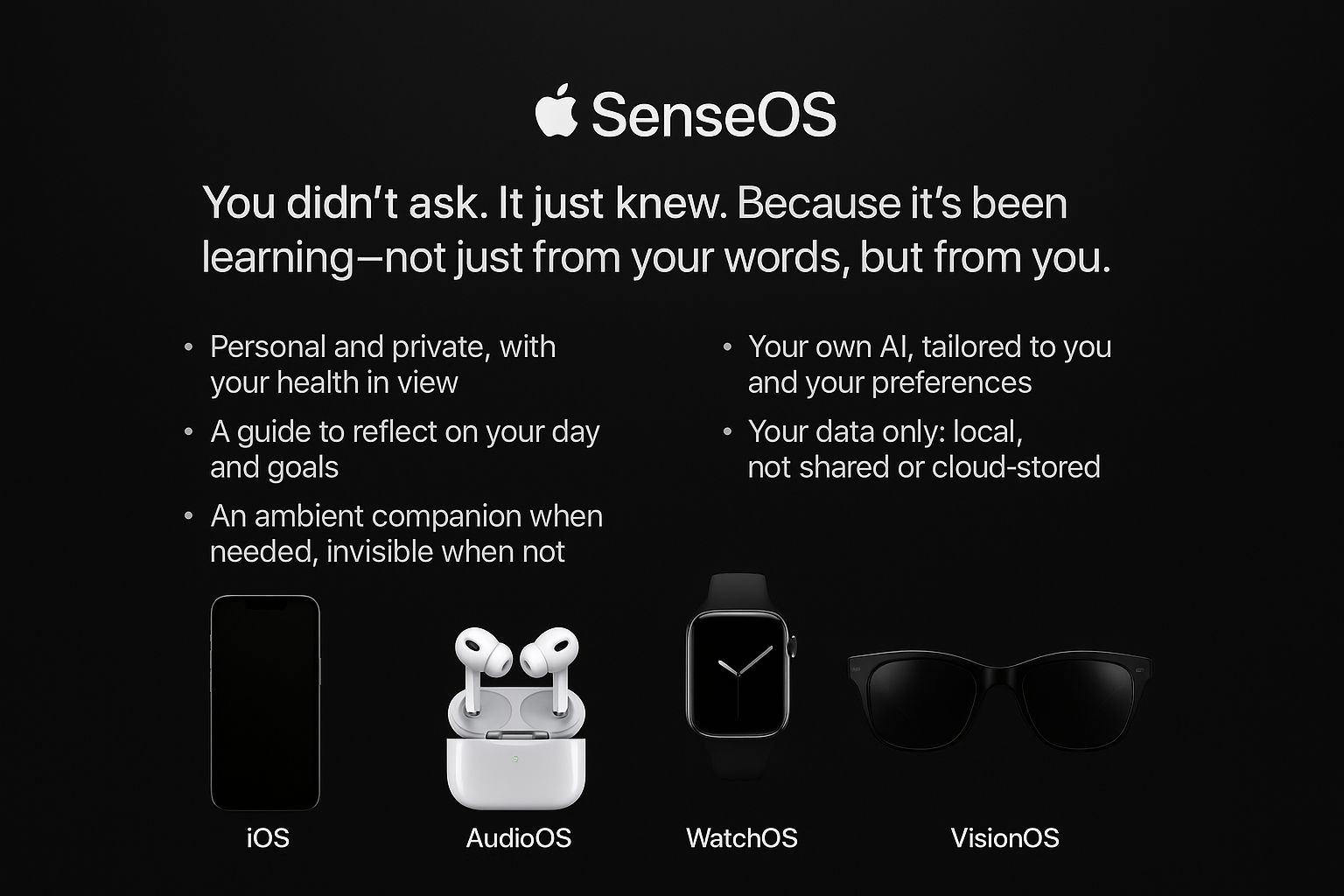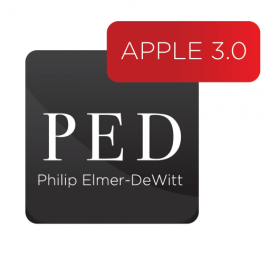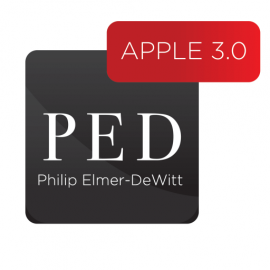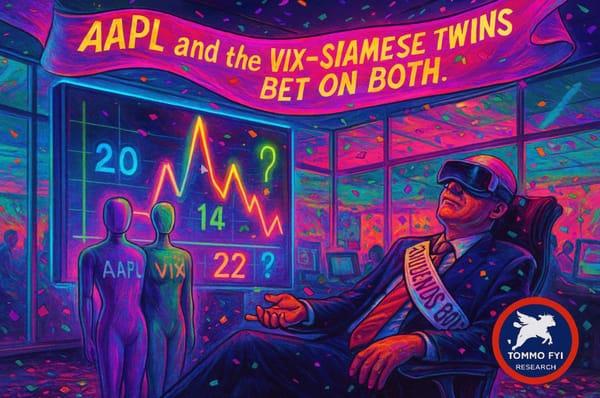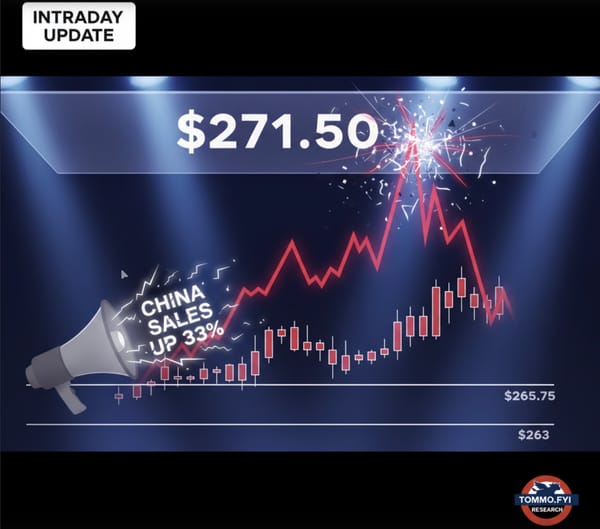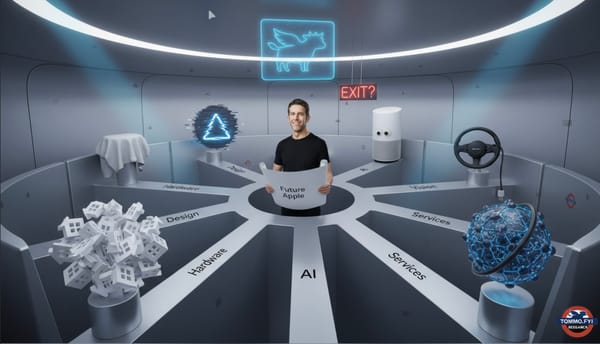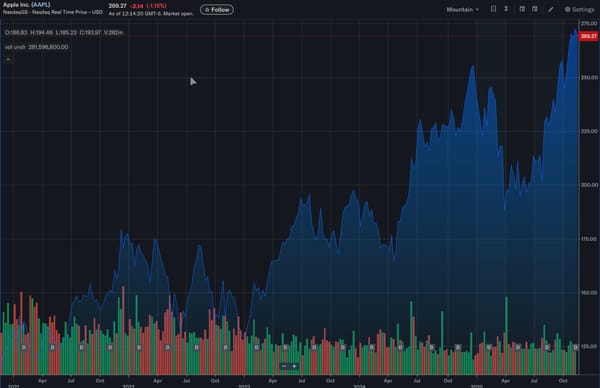SenseOS: The AI Interface Apple Already Built (But Never Launched)
You didn’t ask. It just knew. Because it’s been learning — not just from your words, but from you. Not Apple. Not Siri, but SenseOS - the AI Apple could and should have launched a year ago at WWDC2024, but didn’t. How about ‘25?
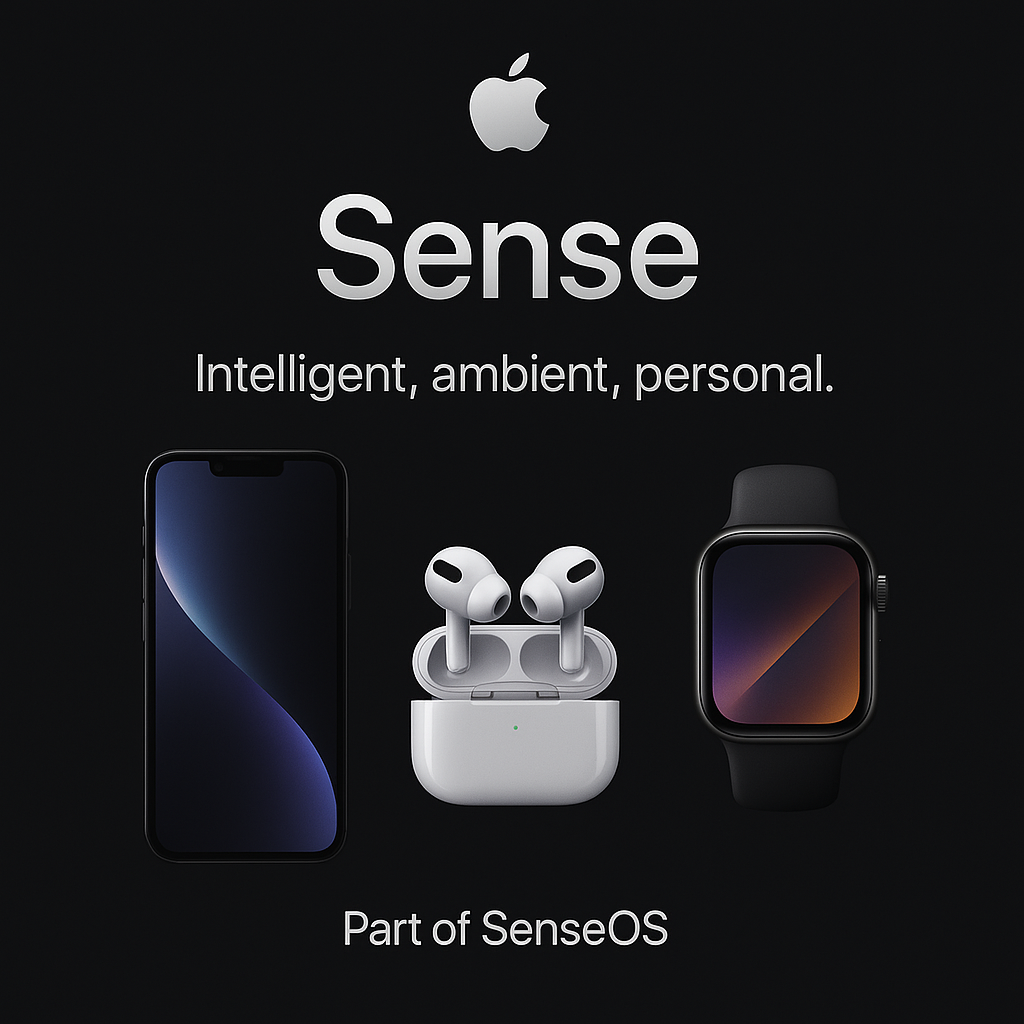
Running up to WWDC 2025, every professional Apple analyst is now repeating the same mantra. The thing is they don’t understand AI, they just understand numbers which is why even the nicest, of them fail to see the big picture
For example, over at Apple 3.0 Philip reports Gene Munster, a true veteran of AAPL forecasting, waxing about AI and how they have two years to get it right. They’ve been getting in wrong. If they wait two more years, who even knows what AI might be by then? The complacency amongst analyst lies chiefly because they are backward looking and by nature are not futurists

And he’s not the only one kicking last year’s can down the road to excuse Apple’s lousy performance and lack of ability to execute. However some analysts seem to be questioning the very ethos of the company, and this is where a meme may be about to take shape: has Apple lost its mojo?
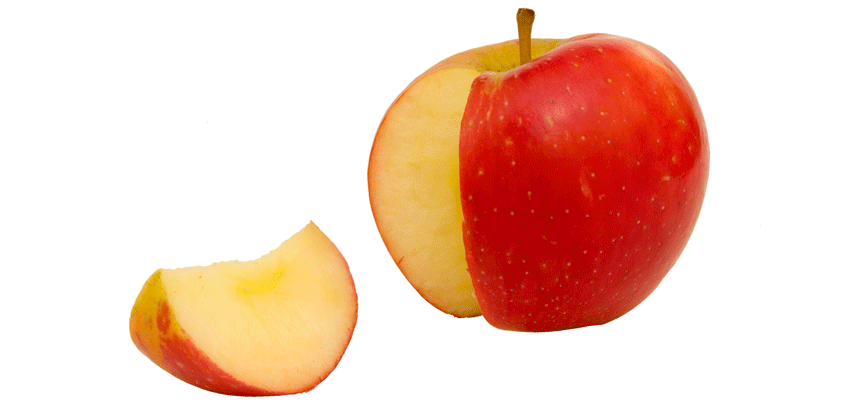
Needham had this to say, which is a lot more insightful and thought provoking than most analysts ChatGPT generate investor notes:
• However, we worry that AAPL’s culture in today's competitive environment:
• Breeds complacency, which lowers urgency just as GenAI disruption threatens to re-tool the entire US economy (ex: AAPL’s delayed rollout of generative AI features and its lagging cloud infrastructure strategy suggest it underestimated how rapidly the technology landscape is shifting);
◦ Makes AAPL slow to acknowledge negative shifts in the regulatory environment and rising geopolitical risks (ex: late to react to tariff exposure and growing regulatory pressures in the EU, U.S. and China)
I. The View from 2025: Apple, the Ambient Threat, and the Forgotten Interface
Apple, for all its precision, is rarely first. But it has always been the best at making the future feel inevitable once it arrives. The clickwheel. Multi-touch. The App Store. Even the Apple Watch, dismissed by analysts at launch, now outsells the entire global wrist watch industry combined. Not because it mimicked a Rolex, but because it understood the wrist as a site of interaction, health, and identity.
But in 2025, something strange is happening. Apple, long the arbiter of interface revolutions, feels on the back foot. The world is pivoting from screen-first to presence-first. And while Tim Cook’s Apple has mastered vertical integration, it risks losing the plot entirely when it comes to ambient AI. Let’s face it, Apple pegged the future as walking around wearing a pair of ski goggles on your face and called it Spatial Computing when whatever its original use case (still undefined) failed to gain traction.
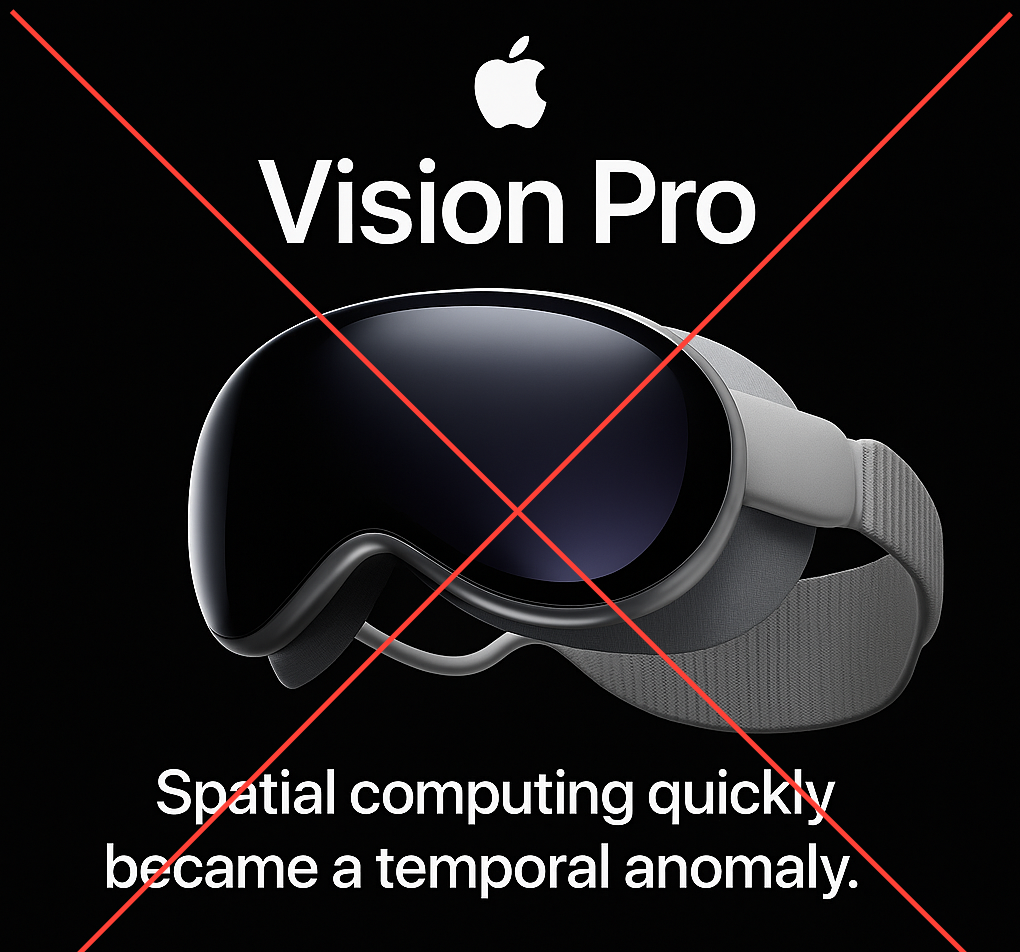
Enter Sam Altman and Jony Ive, whispering a new device into being. Not a phone, not a headset, but a presence. A pendant. A philosophy. Something that listens, adapts, and stays with you. It doesn’t demand your attention—it earns your trust. Apparently. At the moment we just know Altman blew $7B on it.
Apple, it seems, has no such product.
And yet… it has every piece of it.
But there is another way.

II. The Answer Was Already Here: From Accessory to Antenna
AirPods. Apple Watch. iPhone. And soon, AR Glasses running VisionOS. These aren’t accessories anymore. They’re nodes in a personal mesh. They see, hear, sense, and record. They detect heart rate changes and emotional stress. They follow your rhythm, your routes, your regressions.
The only thing missing is the conductor.
That conductor is SenseOS.
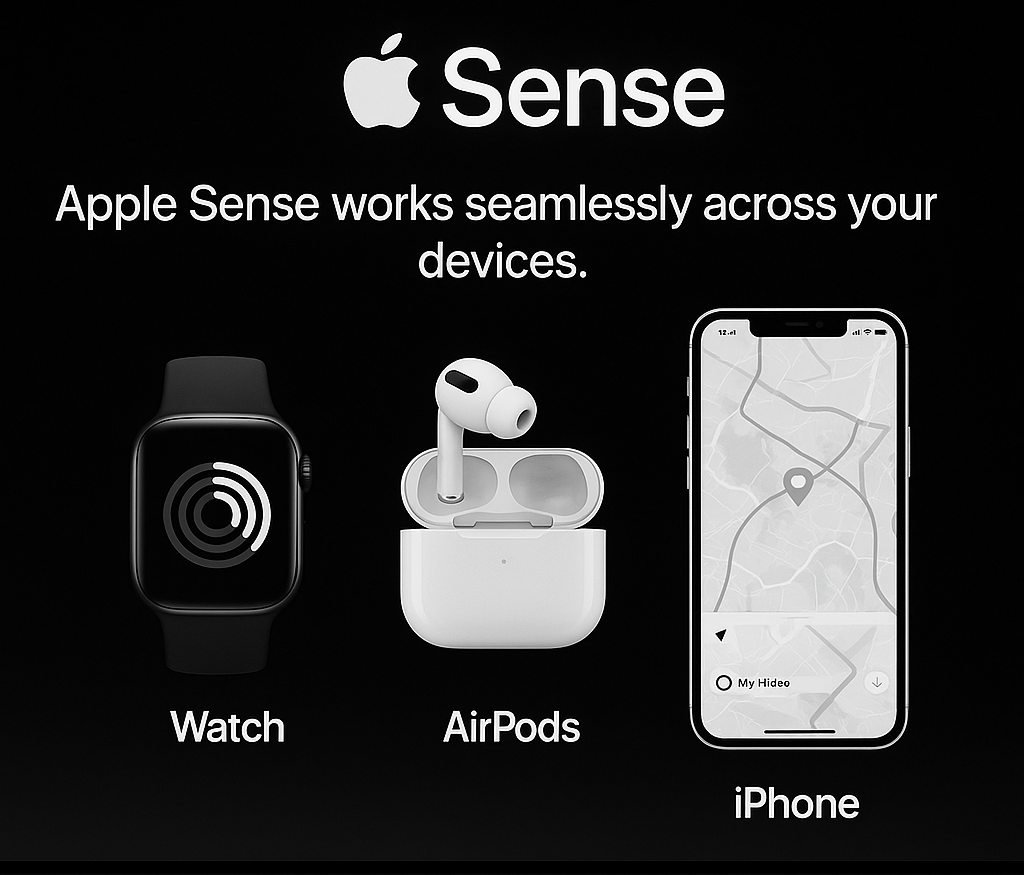
Not a new device. Not a UI skin. But an operating system for presence. A software layer that doesn’t wait for prompts but notices when something matters. That whispers, not interrupts. That builds a continuity of understanding across your day, your health, your relationships, and your goals.
In short: the OS Apple has already built in fragments, but never unified.
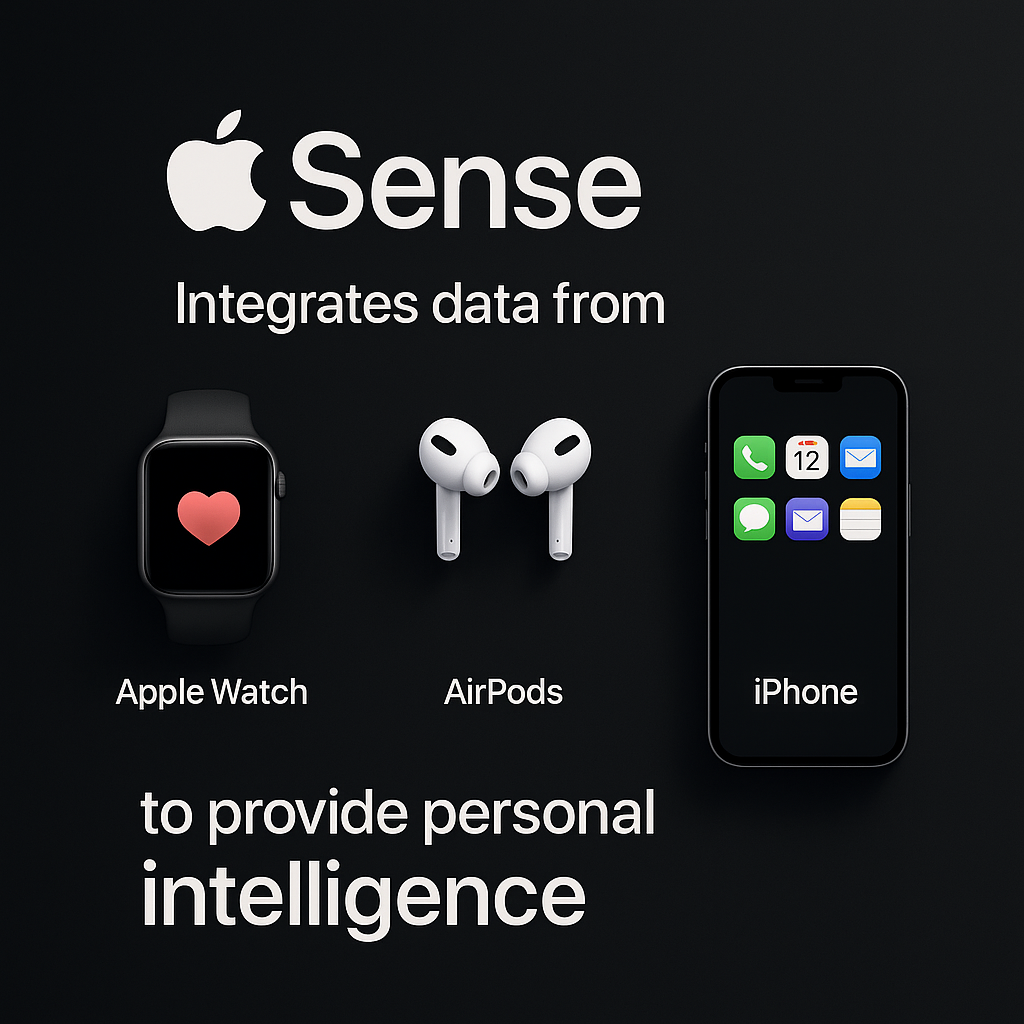
III. From Siri to Sense: Why Apple Needs a Philosophy, Not a Feature
Siri was once revolutionary. In 2010. But it has aged into a punchline. Lacking context, memory, or rhythm, it offers transactional responses in a world craving emotional bandwidth.
SenseOS doesn’t replace Siri. It reframes it. Siri becomes the voice. SenseOS becomes the mind behind the ear.
This is not about GPT-style chat. It’s not about large model size. It’s about trust, timing, and emotional choreography. Your AirPods hear you sigh. Your Watch notices your pace has slowed. Your iPhone notes calendar load. SenseOS infers stress. It doesn’t ask you to describe it.
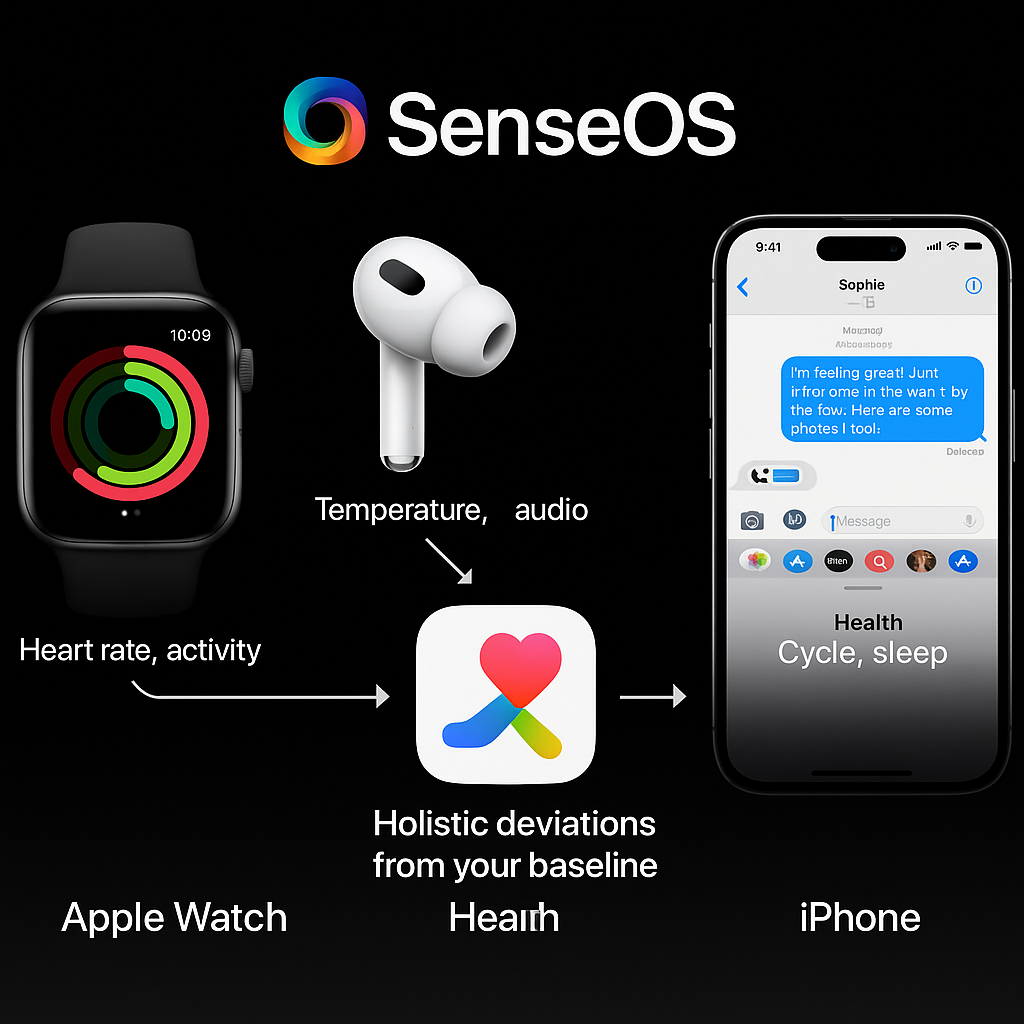
IV. The Altman-Ive Challenge: Not a Device, A Doctrine
Let’s not downplay it. What Altman and Ive are building isn’t a product. It’s likely a rebuke. A rebuke of UX stagnation. A rejection of tap-and-type paradigms. Their pendant, if real, will be a Trojan horse for AI-native living. No screens. Just sensors, tone, co-presence. It will feel like a companion. Not a command line.
Apple, if it hesitates, risks becoming Kodak in reverse: brilliant in hardware, paralysed in philosophy. Finally, “Apple is doomed” much mocked might come true - or if not doomed, then consigned to industrial competency instead of leadership, a bit like Sony.
But the genius of SenseOS is that Apple already has the only advantage that matters: people living inside its ecosystem. And unlike any startup, Apple can deploy a unified, privacy-first, latency-free interface across 2 billion devices.
All it needs is the will to weave the threads.

V. What Is SenseOS? A Private Cognition Layer
SenseOS is not another dashboard. It’s not an app. It’s a cognitive exoskeleton, running silently beneath iOS, WatchOS, VisionOS, and macOS.
It listens through AirPods. Feels through Apple Watch. Sees through Apple Glasses. Integrates via iPhone. It tracks change. Not in data points, but in patterns.

You don’t log a journal. You narrate your life. SenseOS listens, learns, refines. Always local. Always revocable. Always yours.
It does not answer. It adapts.
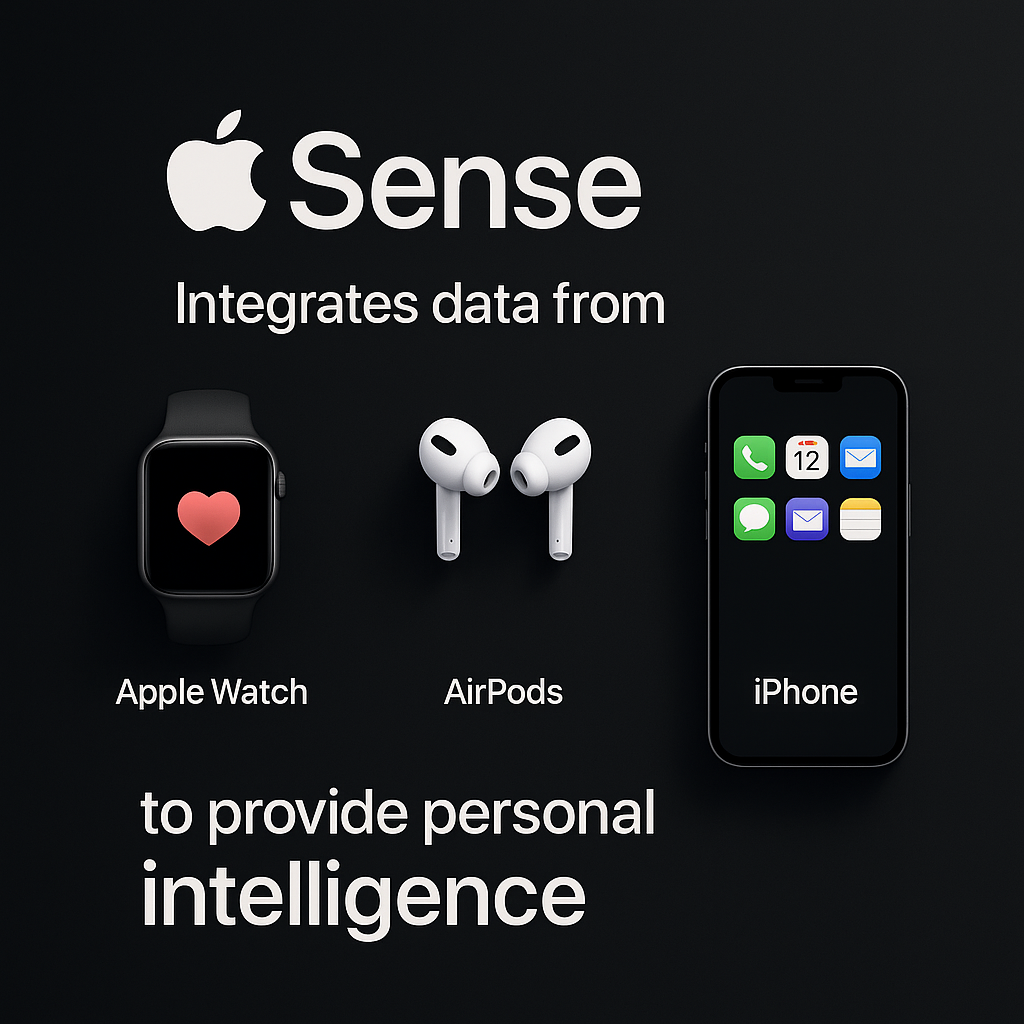
VI. VisionOS and AR: the Next Ray-Ban Moment
Consider this: when Apple launches its AR Glasses in 2026, they won’t position them as niche. They’ll do what they did with the Watch—make them aspirationally ordinary.
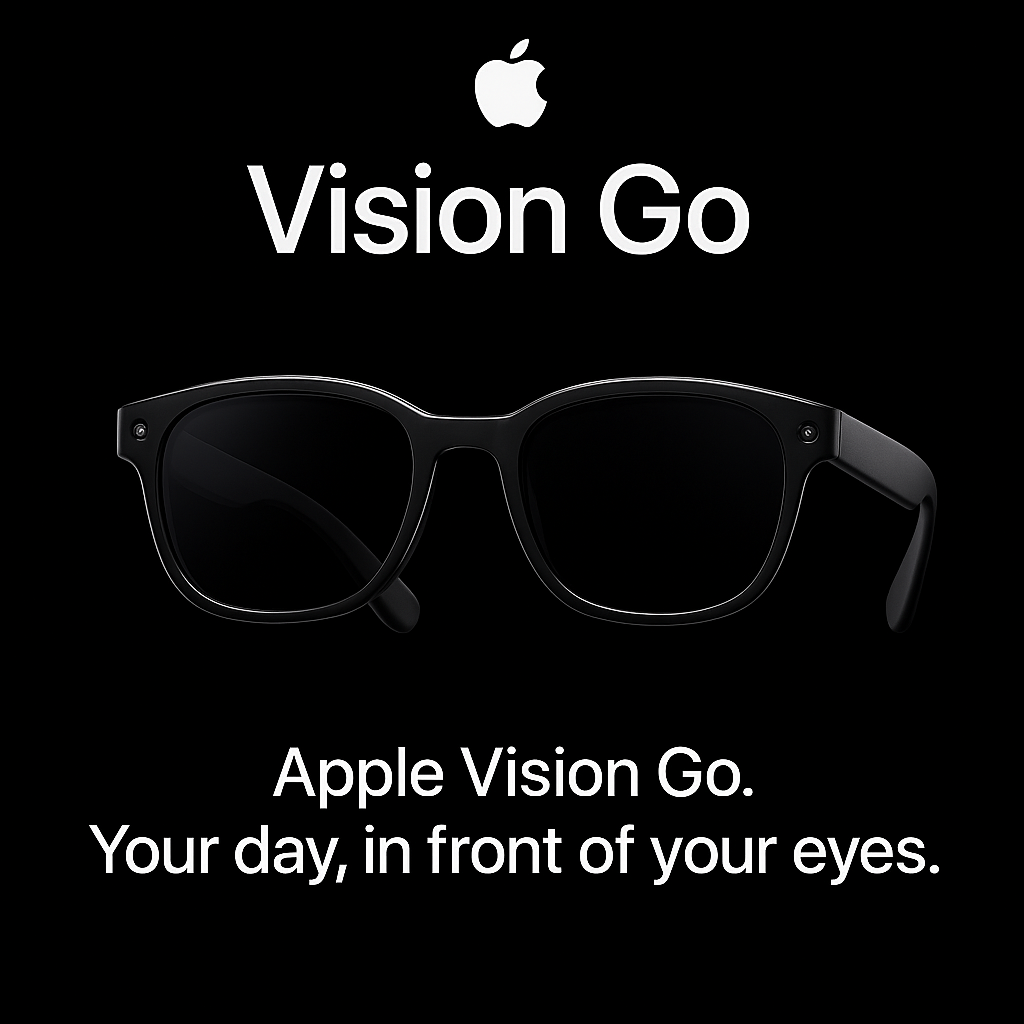
The glasses will:
• Record in 3D
• Stream to social
• Overlay walking directions
• Display notifications with head gestures to reply
• Capture photos without pulling out your phone
• Pair with AirPods for discreet voice journaling or calls
Subtly, they’ll redefine wearables. Not as tech. But as ambient cognition lenses. And running behind them? VisionOS on-device. But above them? SenseOS, interpreting it all.
This is not a sci-fi dream. This is the 2026 replacement for Ray-Bans and Meta’s failed attempt to build on their first (ugly) mover advantage). And once it arrives, nobody will call it AR. They’ll just call it natural.
VII. WWDC 2025: The SenseOS SDK Must Ship
If Apple wants to win the ambient war, it must seed the battlefield. Not with press releases. But with tools.A SenseOS SDK must launch at WWDC 2025. It should offer:
• APIs for tone, biometric, and intent parsing
• Context hooks across HealthKit, Messages, Calendar, Focus
• Secure local storage for ephemeral memory
• Interface triggers across AirPods, Watch, Glasses, Mac
• Tools for creators to build:
◦ Voice journals
◦ Grounding loops
◦ Emotional analytics
◦ Companion agents
- If Apple delays this SDK or it isn’t fully feature rich, it risks missing the boat for the second time in a row, and neither the market not its consumers will be very forgiving, considering the promises made this time last years

If Apple does this, it creates the conditions for developers to invent a new interface category: Ambient Apps. Not widgets. Not workflows. Whispers that move you.
VIII. A Day in the Life of SenseOS
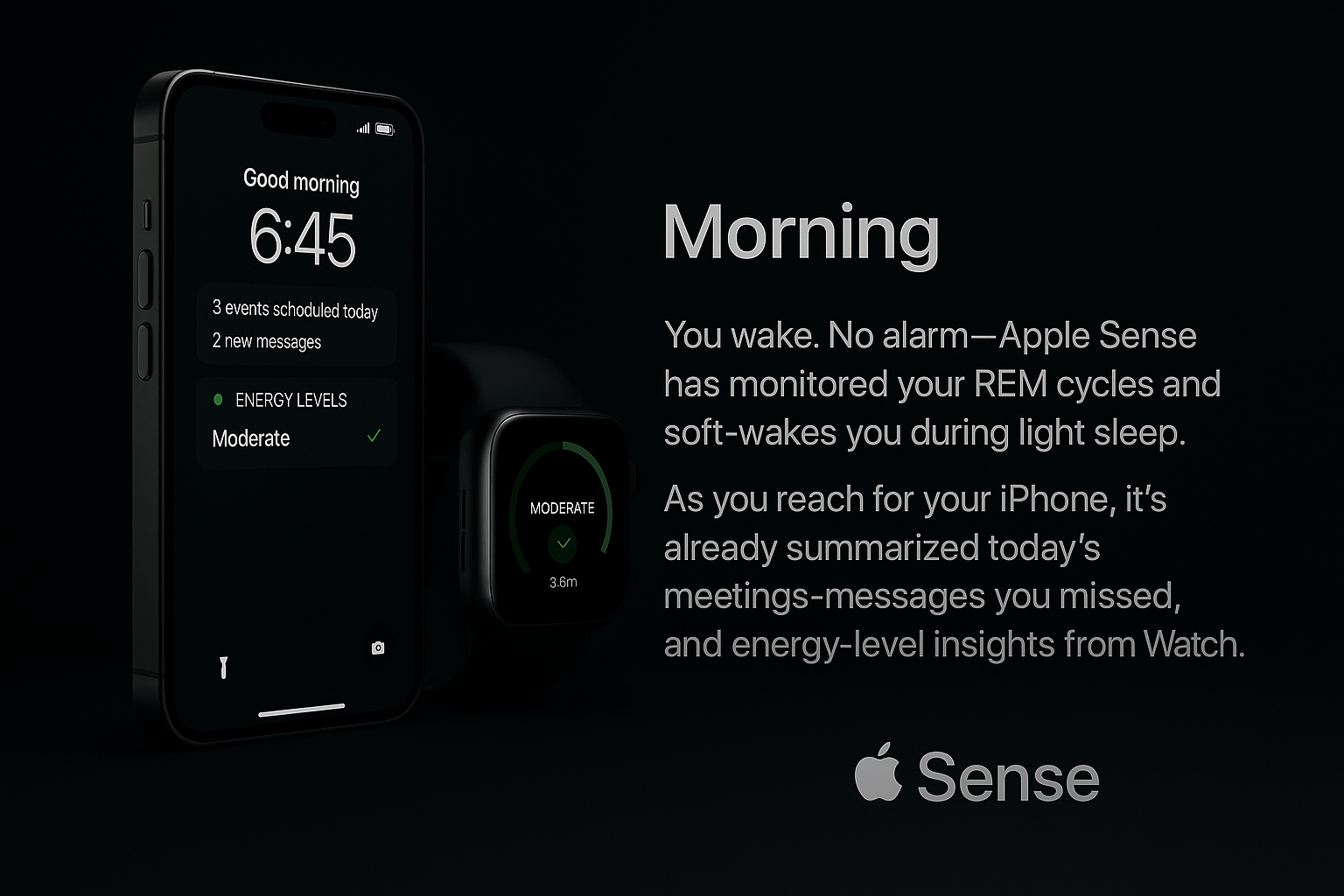
Morning: You’re roused gently—no alarm. Your REM cycle ended, so your Watch vibrates softly. A warm tone in your AirPods: “Today looks busy. Should we move your workout to the afternoon?”
Commute: Siri, now voiced by SenseOS, reads you a 90-second mood-sensitive digest, skipping stress-inducing topics. A voice reply to your colleague is tagged, summarised, and added to Notes.
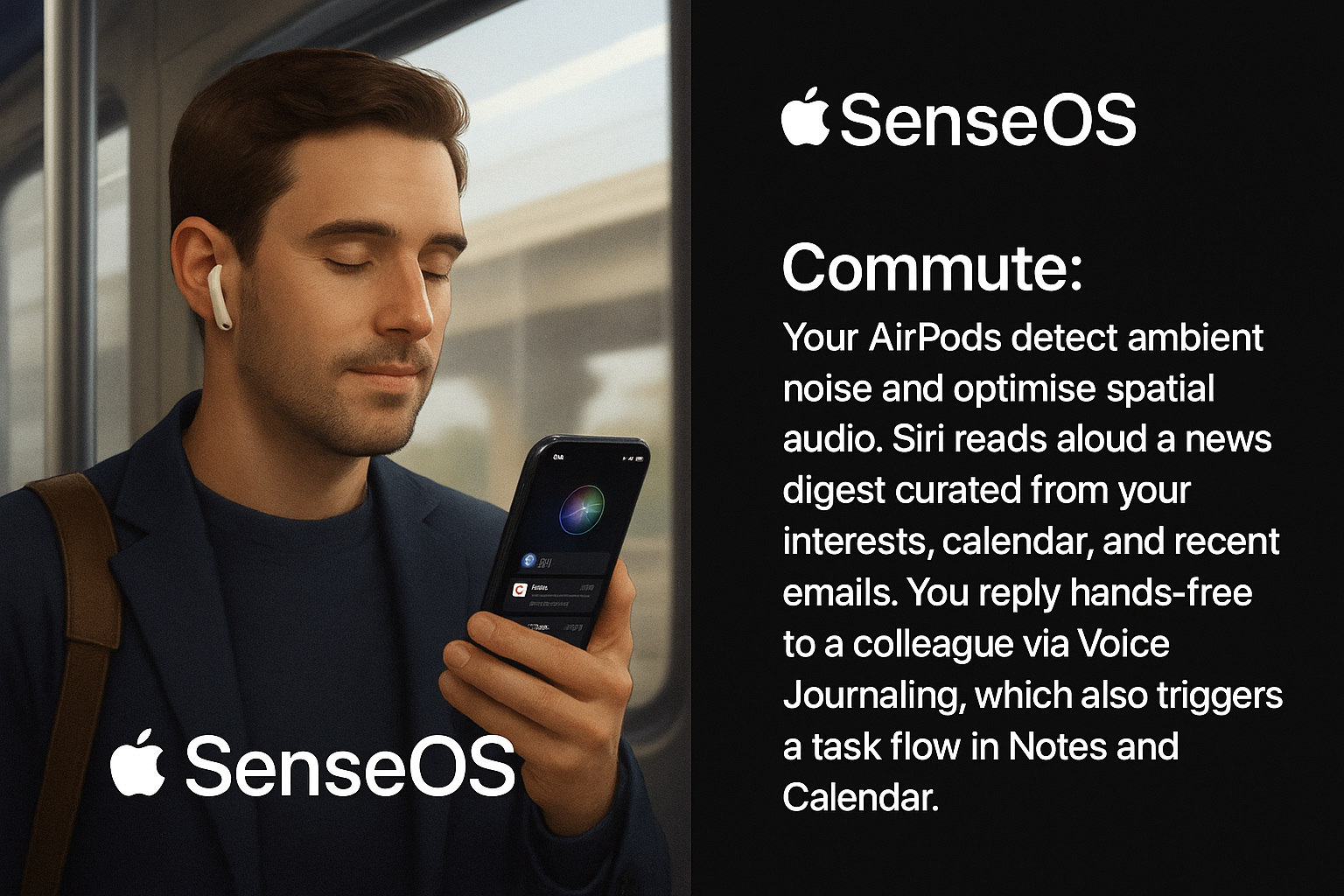
Work: Your Mac reminds you you’ve re-read the same paragraph three times. Your Watch shows a cortisol bump. A suggestion: a 4-minute walk, a rescheduled block. You nod. It adjusts. Starbucks beckons.
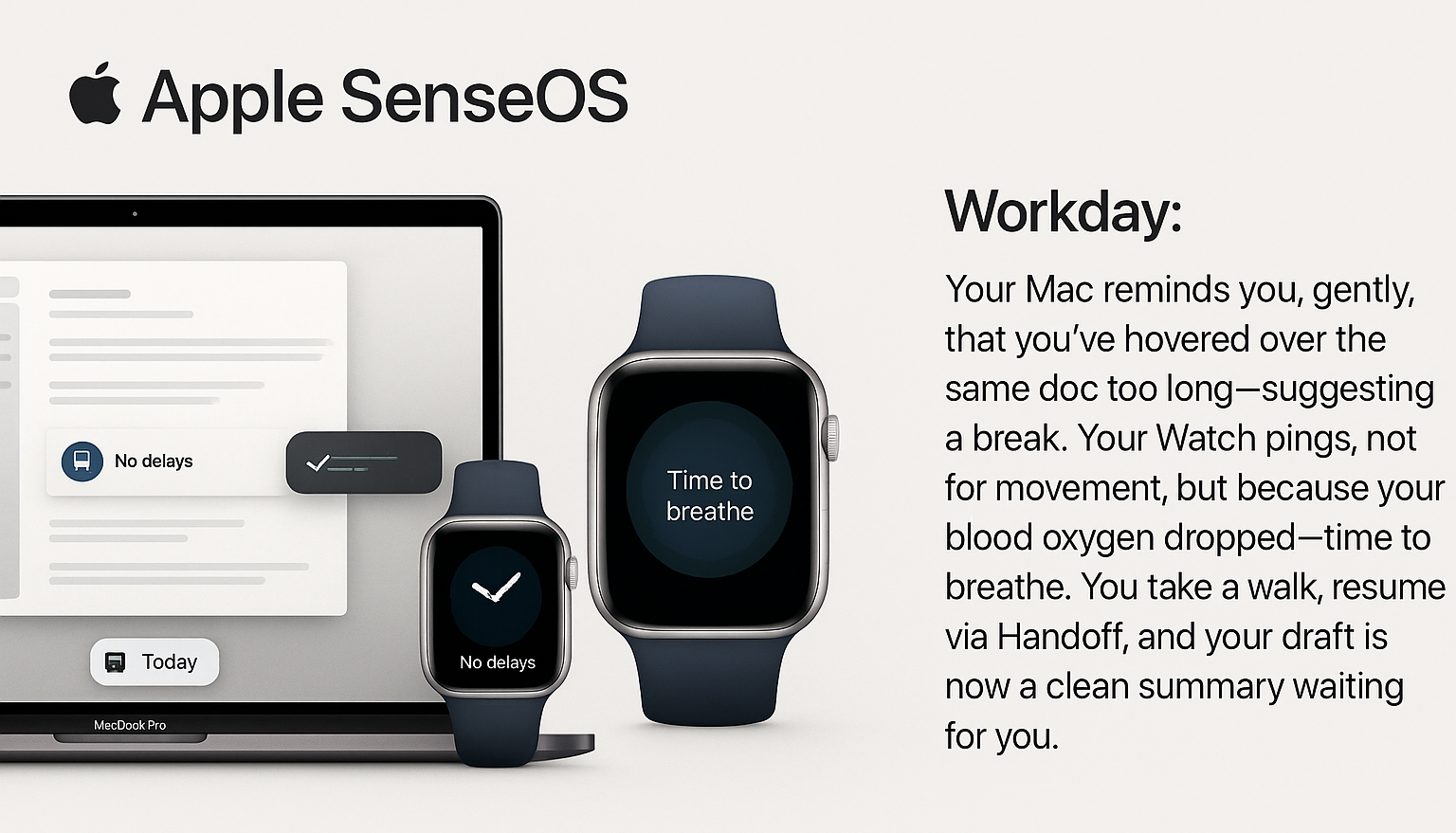
Midday: A friend sends a voice note. They sound… off. SenseOS flags it in the transcription and voice analysis and leaves you a comment, red-flagging it for notice. You record a reply with nuance. Later, it reminds you you might want to check in again, if you’ve left it as an open task.


Dinner: Glasses fade all non-essential overlays. Your iPhone dims. A small nudge from your watch—your voice rose 8% in volume. You course-correct; perhaps you’re coming across a bit loud. A better evening unfolds.

Sleep: The day is summarised, cross-linked to your long-term wellbeing goals. A gentle suggestion:
“You’ve been rushing. Tomorrow might be quieter. Shall I block a window?”
You whisper yes.
It whispers back, “Done.”
IX. The Sceptics’ Test: Why SenseOS Still Works
Not everyone wants a voice assistant.
But everyone wants to feel understood. SenseOS doesn’t try to replicate GPT. It doesn’t chat unless prompted. It doesn’t lecture. It notices. Subtly. Respectfully.
For the cautious:
• It runs on-device
• It stores locally, or not at all
• It is always revocable
• It adapts only with consent
- For the the LLM skeptics out there, you can always turn it off. But I’m betting you’ll slowly find it as useful as an iPod was, when you were still wedded to your CD collection and half your carry on was full of a large CD case.
It is less a system, more a signal: I’m here. I’m listening. I’m learning. And you are safe.
X. For the Builders, the Thinkers, the Overwhelmed, the Futurists. For Gen Z.
If you already live inside LLMs, you know the chaos:
• Ideas scattered across tools
• Prompts lost in tabs
• Journals unsorted
• Notes untagged
And of course, the dreaded “this conversation as run out of resources, please begin another chat”
SenseOS is your mesh:
- Tag thoughts as you speak
- Pull summaries from context
- Hear your own words, refined, reframed, reoffered
- Sync voice, tone, gesture into meaning
- Journal on the fly, verbally, visually, posting to social media instantly, and using your VisionOS AR glasses to make sure you’re not in middle of a road accident while dancing to Taylor Swift on your bike in the middle of rush hour traffic.
This is AI not as novelty, but mirror.
XI. Apple’s Real Competitor Is Not Altman. It’s Its Own Caution.
Altman and Ive will ship. Their product will enchant. But Apple has the edge in:
• Silicon
• Distribution
• Privacy trust
• Multi-device presence
- If it has the presence to start executing and regain its vision. That if is now going to be answered in just a few days.
What it needs is conviction.
The courage to lead, not follow.
The vision to unify, not iterate.
The audacity to say: we’re not late—we were always here.
If Apple delivers SenseOS, with an SDK, a clear philosophy, and a VisionOS-tier rollout across Glasses, Watch, Phone, and AirPods, then it doesn’t need to race anyone. It becomes the course., and it has set and defined the new paradigm, just as Jobs did with iTunes, the iPod, the iPhone and the iPad, and Apple did with the Watch. Except this is bigger. It’s like the reinvention of the human/computer interface, except it makes the computer irrelevant - by using SenseOS as the hypervisor to manage the rest of Apple’s OS stack across its devices.
XII. What the Future Will Feel Like
It won’t feel like AI. It won’t feel like ChatGPT. It won’t feel like “next-gen”. It will feel like: The right nudge at the right time. Both a sigh of relief, a pause, and then a rush of excitement as consumers the world over suddenly experience the rush of a “one more thing” we haven’t experience for a long, long time. An event as much of a milestone as the transition to OSX was from the overbloat of MacOS9.
